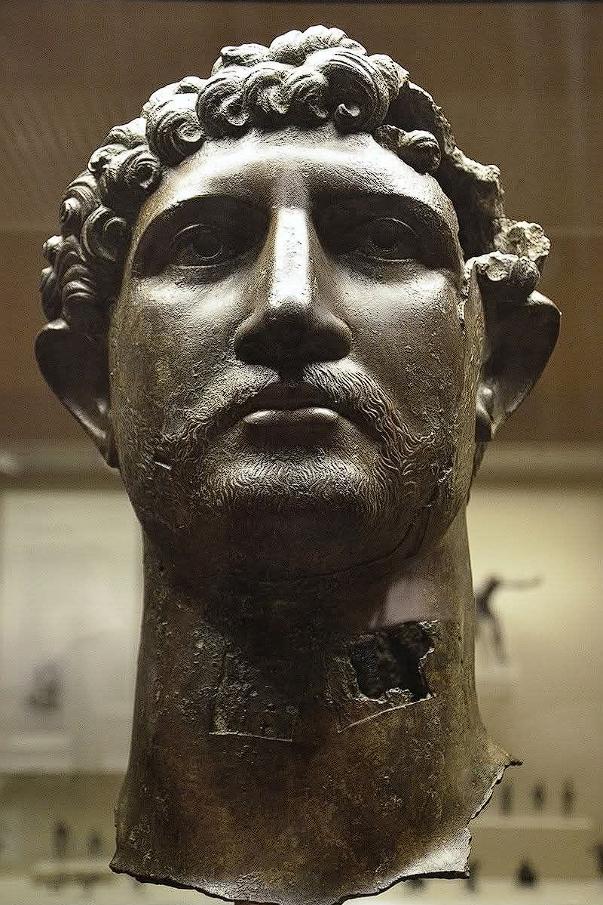“In the year 1834, the murky depths of the River Thames yielded a remarkable artifact—a bronze head of Emperor Hadrian, a tangible link to a reign that reshaped the Roman Empire’s strategic outlook and left an indelible mark on the landscape of Britain. This discovery served as a poignant reminder of Hadrian’s profound contributions, most notably the construction of the formidable Hadrian’s Wall.”
A Shift in Imperial Strategy: From Expansion to Consolidation
- The Emperor’s Vision: Securing the Empire’s Frontiers:
- Hadrian’s reign was characterized by a pivotal shift in Roman imperial strategy, moving away from relentless expansion towards a focus on the consolidation and fortification of existing borders. This strategic reorientation was particularly evident in his approach to Britain.
- Unlike other regions of the empire, where natural barriers such as the Euphrates, Rhine, and Danube rivers provided inherent defensive lines, Britain lacked such geographical advantages. The persistent threat posed by the northern Celtic tribes necessitated a more proactive and engineered solution.
- The Genesis of Hadrian’s Wall: A Monument to Roman Engineering:
- In 122 AD, Hadrian initiated the construction of a monumental defensive structure—Hadrian’s Wall. This ambitious project was designed to incorporate a network of forts, each garrisoned by 600 soldiers, and smaller milecastles, manned by detachments of 12 to 20 soldiers.
- This strategic deployment of military resources, coupled with the sheer scale of the wall’s construction, reflected Hadrian’s determination to secure the empire’s northern frontier.
A Testament to Roman Ingenuity: The Construction of a Frontier
- A Herculean Effort: The Labor of Legions:
- The majority of Hadrian’s Wall was completed within a remarkable span of six years, a testament to the organizational prowess and engineering expertise of the Roman legions. Three legions—Legio II Augusta, Legio VI Victrix, and Legio XX Valeria Victrix—comprising 15,000 soldiers, undertook the bulk of the construction, supported by the logistical capabilities of the Roman fleet.
- These soldiers, skilled in surveying, engineering, masonry, and carpentry, possessed the multifaceted expertise necessary to execute such a complex and demanding project.
- A Symbol of Roman Power: Adapting to the Challenges of Empire:
- Hadrian’s Wall became more than just a physical barrier; it evolved into a potent symbol of Roman military strength and imperial resolve. It stood as a testament to the empire’s ability to adapt to the diverse challenges posed by its expanding borders.
- This monumental structure, therefore, represents not only a feat of engineering but also a strategic masterstroke, a lasting legacy of Hadrian’s vision for a secure and consolidated empire.
Conclusion
“The bronze head of Emperor Hadrian, unearthed from the Thames, serves as a poignant reminder of a reign that reshaped the Roman Empire’s strategic landscape. Hadrian’s Wall, a testament to his vision and the engineering prowess of his legions, stands as a lasting symbol of Roman power and adaptability, a monument that continues to echo the emperor’s enduring legacy.”

CÁC TIN KHÁC
Mary Walton: The Forgotten Inventor Who Helped Clean Up America’s Cities
Tomb of Queen Nefertari in the Valley of the Queens, Egypt
Discover the Hypostyle Hall of the Temple of Hathor at Dendera
Venus de Losange: Unveiling the Mystery of a 20,000-Year-Old Paleolithic Icon